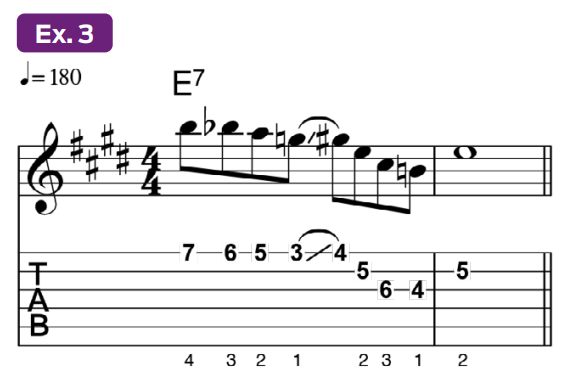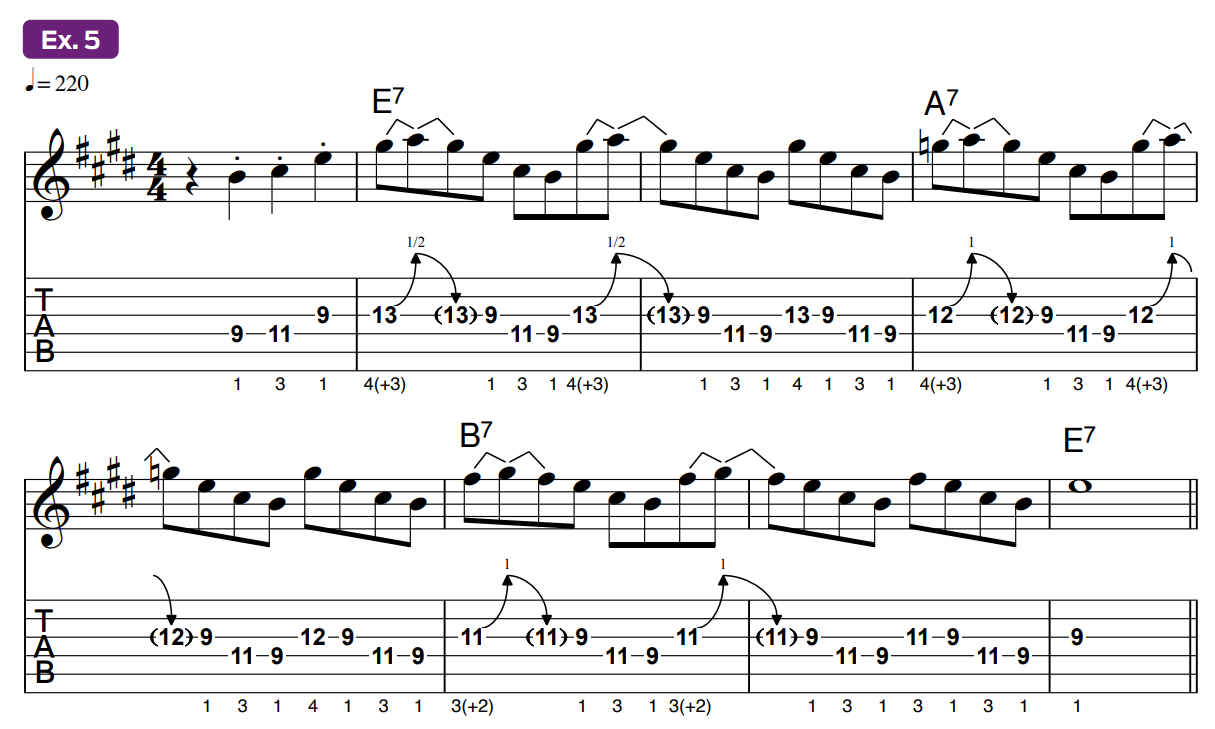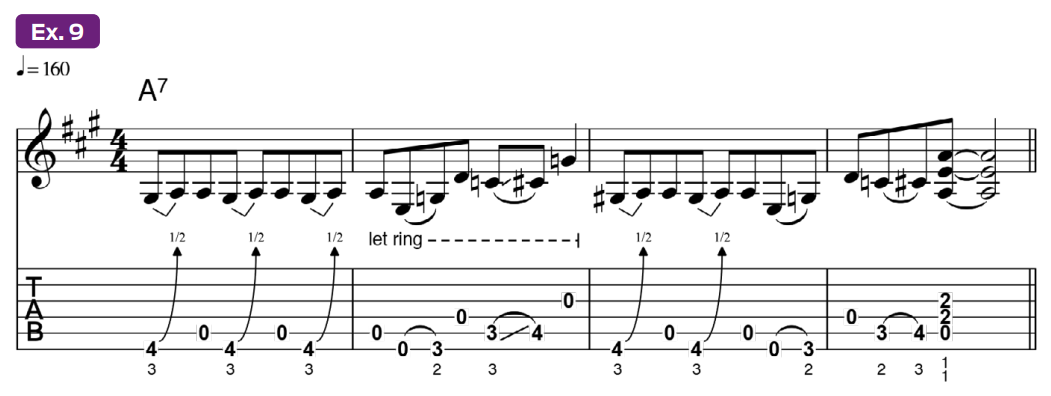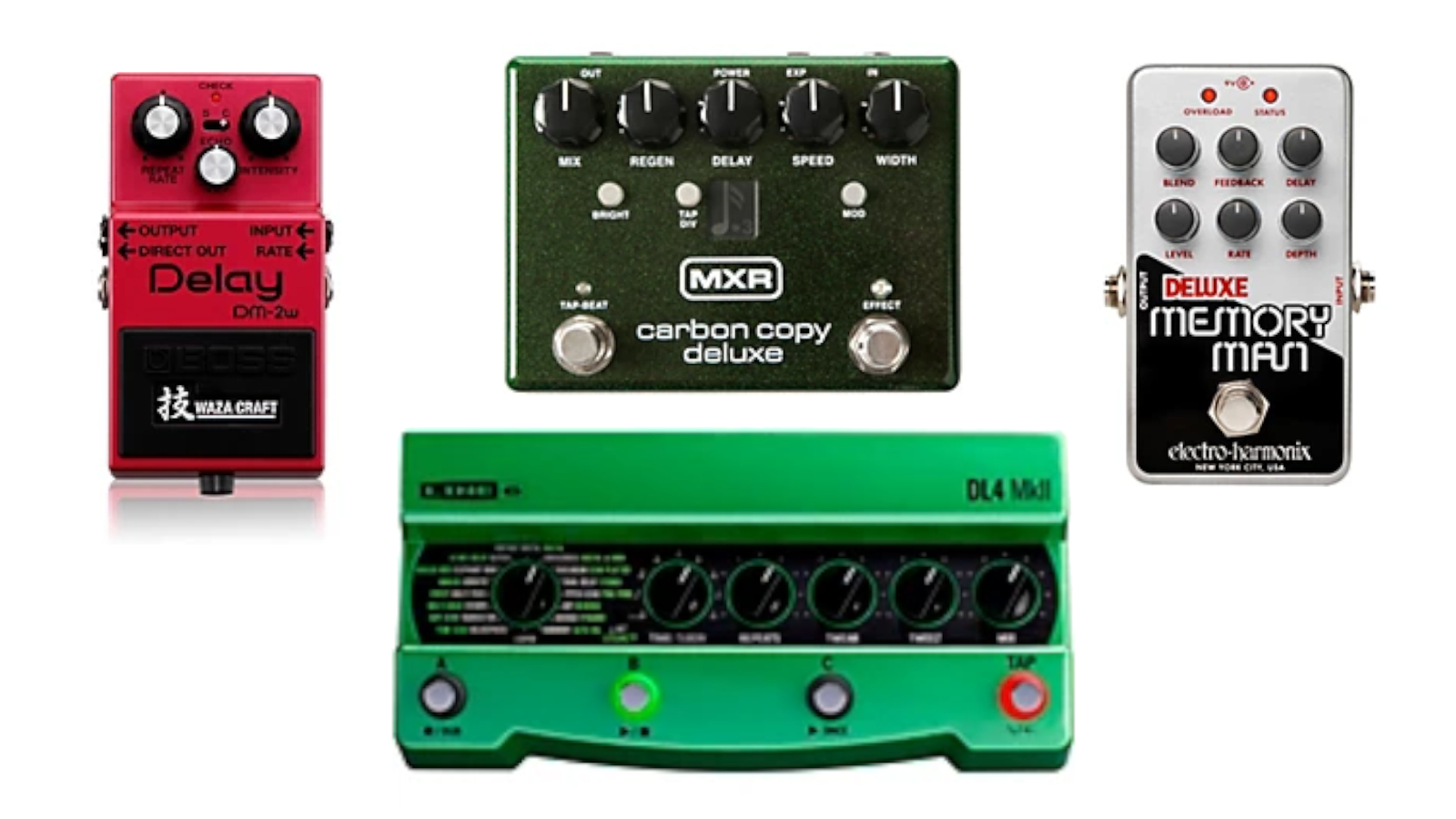
Let’s face it – quite a few of us die-hard rock guitarists are a little bit country too, whether we’re aware of it or not.
Think about it: Our rock and roll forefathers, players like Chuck Berry, Scotty Moore, Cliff Gallup, Eddie Cochran and James Burton, sprang up from the rockabilly era, which was a fusion of blues and country.
In the 1960s, George Harrison introduced millions of Beatles fans to his Chet Atkins-inspired fingerpicking on his Gretsch guitar.
Don’t forget the country-influenced southern rockers of the 1970s, such as Lynyrd Skynyrd, as well as prog-rock legend Steve Howe’s sizzling twangy onslaughts in many Yes songs.
Hell, even Eddie Van Halen tipped his hat to the genre in Van Halen’s “Finish What Ya Started.”
And speaking of heavy hitters, Zakk Wylde and John 5 are known for dipping into the country vernacular in their solos.
Whether you plan to plow full-bore into the world of country guitar or are just a little bit curious about what all the hubbub is about, this lesson will give you the tools you need to start rubbing shoulders with masters of the style – players like Danny Gatton, Albert Lee, Chet Atkins, Jimmy Bryant, Roy Buchanan, Joe Maphis, Brent Mason, Brad Paisley, Tony Rice, Roy Clark, Jerry Reed, James Burton, Jerry Donahue and Johnny Hiland – to name just a few.
All the latest guitar news, interviews, lessons, reviews, deals and more, direct to your inbox!
So come on little doggies, put on your boots and spurs, hop into the saddle and let’s take a trail ride through fundamental country lead guitar techniques, advanced licks and string-bending tricks.
GEAR
Fender’s Telecaster and combo amps like the Deluxe and Twin Reverb are the Holy Grail of modern “hot country” guitar.
If you don’t own a Tele, any Stratocaster-style guitar will do. For that matter, any solidbody electric guitar equipped with a single-coil (soapbar) or humbucker pickup in the bridge position will get the job done.
For your amp, any bright sounding combo will suffice. And be sure to include effects. Compressor, tremolo, reverb and boost/overdrive pedals are in the running, as well as a delay pedal, to dial in a quick slap-back echo.
STARTER LICKS
Let’s get the ball rolling with a series of “starter” licks set against an E7 tonality (E, G#, B, D).

Ex. 1 is a stock country lick. It’s so common that it has a name: the Lester Flatt run.
Flatt was a singer and guitarist in the famous bluegrass duo Flatt & Scruggs, in which Earl Scruggs was the banjo player.
Lester would often insert his run at the end of his vocal phrases, fashioning it for whatever chord he was playing at the time.
The melodic foundation of this lick is the E major pentatonic scale (E, F#, G# , B, C# ), with an added minor, or “flat” 3rd (b3), G.
The major pentatonic scale (1, 2, 3, 5, 6) is an essential scale in country music. Adding the b3rd provides a bluesy quality as well as a chromatic link between the 2nd and major 3rd degrees of the scale.

Many refer to this hybrid scale as the major blues scale. For the purpose of this lesson, we’ll refer to it as the bluegrass scale.
It’s interesting to observe that the notes of the bluegrass scale align exactly with the relative minor blues scale. In other words, the E bluegrass scale (E, F#, G, G# , B, C# ) is enharmonic to (contains the same notes as) the C# blues scale (C# , E, F# , G, G# , B ).
Just as you can use C# minor pentatonic patterns to cast E major pentatonic lines, so too can you employ C# blues scale patterns to create a variety of countrified licks over the same chord.
Check it out. You may discover that you have an inner “twang master” waiting to bust out of your rocker heart.
Like many straight-ahead jazz guitarists, traditional country pickers are heavily influenced by the blues.

Case in point: Ex. 2 is a stock phrase that incorporates the E blues scale (E, G, A, Bb, B, D), with a passing major 3rd degree (G#).
Although the lick is played in 7th-5th positions, there is an open-string inclusion, namely the open D string).
Many hot pickers seem to honor an unofficial country guitar commandment: “Thou shalt play open strings whenever possible.” This important open-string nuance will pop up throughout this lesson.

And speaking of jazz, Ex. 3 is a phrase right out of the bebop vocabulary. But when performed with a bright, twangy tone and chicken pickin’ textures (more to follow on this topic), the lick feels right at home in a country music setting.
Incidentally, although it’s based more on arpeggio target tones than a scalar approach, this lick also uses the bluegrass scale.

Ex. 4 is pure E major pentatonic (E, F#, G# , B C# ), fortified with whole-step bends and pre-bends on the G string.
Note the use of reinforced bend fingering here, with the middle finger (2) assisting the ring finger (3) in pushing the string, from one fret below.

Ex. 5 puts a wrap on this starter section with a Danny Gatton/Albert Lee-inspired melody.
Basically, an E major pentatonic-based passage, it utilizes a series of strategically placed G-string bends to outline a I7 - V7 - V7 chord progression in the key of E: E7 - A7 - B7.
The half-step bends and releases at the 13th fret supply a major 3rd-suspended 4th interplay (G# - A) over the E7 chord (E, G#, B, D), while the 12th-fret whole-step bend maneuvers hit the b7th (G) and root (A) of A7 (A, C# , E, G).
The whole-step bend/release at the 11th fret targets the B7 chord’s (B, D# , F# , A) 5th (F# ) and 13th (G# ).
CHICKEN PICKIN’
One of the most recognizable techniques in hot country guitar is what players call chicken pickin’. Simply put, chicken pickin’ involves the inclusion of “dead” or fret-hand-muted notes interspersed between melody notes.
They are sometimes strategically placed, as in every other note in an eighth-note phrase, or just included willy nilly for the percussive effect the sound produces.
James Burton, Roy Buchanan and Albert Lee are generally considered among the pioneers of this electrifying technique, while more modern players such as Brent Mason and Brad Paisley have kept the clucking sound alive and kicking.

Examples 6a-d use the same phrase to illustrate four different pick-hand approaches to achieving the chicken pickin’ effect.
Ex. 6a uses alternate picking on the G string while the fretting finger is lifted off the fret but remains on the string to deaden every other note.
Ex. 6b utilizes a similar technique, except the dead notes are produced on the D string.
Ex. 6c is similar in nature to Ex. 6a, except it employs hybrid picking (a combination of pick and fingers). Use your middle finger (m) to pluck the G string in an aggressive fashion.
Ex. 6d also uses hybrid picking but, as in Ex. 6b, muted attacks are on the D string.

Ex. 7 is a fancy “6ths lick” phrase that is fortified with chromatic chicken pickin’ ornamentations on the D string.
This high-octane technique has been used in one form or another over the years by every hot country player, from Joe Maphis to Brent Mason.

Ex. 8 proves that you don’t have to be playing in a country band to put chicken pickin’ to good use.
In the style of Zakk Wylde’s hard-rocking countrified licks, the passage zips down the A minor pentatonic scale (A, C, D, E, G) in sequenced fashion, fortified with super-aggressive, middle-finger picking attacks along the way.
OPEN STRINGS
As mentioned earlier, open strings are a prominent, permanent fixture in country lead guitar. The following seven examples depict a wide variety of open-string ploys.

Ex. 9 is a low-string twanger, the likes of which has been used, in various permutations, in countless country and rockabilly solos and riffs, not to mention mainstream pop-rock (for example, the Kenny Loggins track “Footloose”).

Ex. 10 is an open-position, double pull-off fest. Cast for a G7 (G, B, D, F) tonality, it combines the scales G minor pentatonic (G, Bb, C, D, F) and G major pentatonic (G, A, B, D, E) in a shape-oriented pattern along the G and D strings (3rd fret, 2nd fret, open string).

Ex. 11 is another open-position double pull-off example. Designed for an A7 (A, C#, E, G) tonality, this lick follows the A Mixolydian mode (A, B, C# , D, E, F# , G) symmetrically down the G, D and A strings, capping off with a quarter-step bend on the low E string’s 3rd fret and culminating with an open A5 chord.

Ex. 12 introduces a country guitar technique known as the banjo roll.
Getting its name from the arpeggiated picking techniques of bluegrass banjo stylists such as Lester Flatt (à la “Foggy Mountain Breakdown”), banjo rolls are most often played on a set of three adjacent strings, typically with one or more open strings.
Here we find the D-G-B string set being used in the first two bars, segueing to the A-D-G set in bar 3.
The trick to playing this lick is to follow the hybrid-picking notations faithfully
The first measure alone is worth the price of admission, as it could be cycled relentlessly at will to produce a mesmerizing soundscape over a static G7 chord.
Bar 2 provides a G Mixolydian (G, A, B, C, D, E, F) effect, with a melodic descent down the D string, reinforced with the root (G) and 3rd (B) of the G7 tonality.
Measure 3 sets the G bluegrass scale (G, A, Bb, B, D, E) at play on the next to lowest three-string set (A-D-G), closing on a low G root note.
The trick to playing this lick is to follow the hybrid-picking notations faithfully: Pick down on the lowest string of each set, followed by middle (m) and ring (a) finger plucks. (Be sure to pluck the strings with an upward motion.) Next in line in our open-string studies is the hybrid-picking passage shown in

Ex. 13, which displays the “cascade” maneuvers made famous by Chet Atkins.
This advanced technique, which is somewhat distant cousin to the banjo roll, produces scale-oriented melodies by staying consistent to set arpeggio patterns that are often played along adjacent four-string groupings.
This example is played on the top-four string set, D-G-B-E. Start off by familiarizing your plucking fingers with the hybrid-picking pattern in the first measure, as well as the fret-hand fingerings.
You should hear the first five notes of the A minor scale in ascending and descending fashion
Listen closely to the notes that are produced, and you should hear the first five notes of the A minor scale in ascending and descending fashion. Consider this the melodic motif, if you will.
The following bars remain consistent, both in terms of the picking (roughly) and fretting, and virtually “roll” with the chord changes: Am (A, C, E) - Am(maj7) (A, C, E, G#) - Am7 (A, C, E, G) - Am6 (A, C, E, F# ).
The final two examples in this open-string portion of the lesson are also based on the Chet Atkins “cascade” style but are more lick oriented (as opposed to chordal) in nature.

Ex. 14 is a pretty passage based on the E major scale (E, F#, G# , A, B, C# , D#).

Ex. 15 is a moody phrase formed exclusively from the E minor pentatonic scale (E, G, A, B, D).
PEDAL-STEEL BENDS
Another common fixture in country lead guitar is the pedal steel-style string-bending technique.
These special bending techniques are emulations of licks commonly performed on a pedal steel, which is essentially a lap-steel guitar that stands on four legs and additionally sports a system of foot pedals and knee levers that tighten and/or loosen designated strings to create precisely calibrated pitch bends.
Quite difficult to master on guitar, pedal steel-style bends require strong bending fingers and a well-trained ear to zero in on the precisely intonated target pitch of the bent notes(s). (Consider using light-gauge strings to be a prerequisite for performing the following examples.)

Ex. 16a is a “starter” pedal steel-style bend that illustrates the basic approach.
The concept is to hold the note on the high E string to its fixed pitch (G) while bending the B-string note up a whole-step, from D to E.
This is what’s known as an oblique bend, for which one pitch moves up or down while another one is held stationary.
At first, the natural tendency is to allow the pinkie to follow suit and bend the high E string slightly. Don’t allow this to happen! Concentrate on holding that finger firm in its fixed position while simultaneously bending the B string with your 3rd finger.
And, again, as indicated by the fingering “3(+2),” use your middle finger to assist with the bending.
End-game result: a double-stop dyad that matches the chord tonality of the C chord, with the major 3rd (E) and 5th (G).

Ex. 16b is a triple-stop oblique bend that results in a 1st-inversion C major triad (E, G, C).
Here, the notes G and C on the top two strings are barred with the pinkie and held in place while the ring finger, supported one fret below by the middle, pushes the D note on the G string up a whole step to E.

Ex. 16c demonstrates a tricky and very cool-sounding variation on the triple-stop oblique-bending technique, for which the top note is bent instead of the bottom note.
In this example, an inverted C5 power chord (C, G) is held in place on the D and A strings with the 3rd and 4th fingers while the 1st finger bends the G string, by pulling it downward (toward the floor, or in toward the palm), bending the D note, which is the major 2nd of C, up a whole step to E, the major 3rd.
This is a signature move of the great Jerry Donahue.
Our next three examples (17–19) employ pedal steel-style bends to supply chordal backdrop to single-note passages, emulating the kinds of slick, high-tech licks commonly featured by such highly accomplished country pickers as Brent Mason and Brad Paisley in their solos and lead fills.

Ex. 17 is a C major pentatonic (C, D, E, G, A) lick cast in 5th position. Seemingly nothing out of the ordinary here, except that the initial bend (D to E on the G string) is sustained throughout most of the phrase.
In addition, the fretted notes on the B and high E strings are also held in place when the G-string bend is released to pitch.

Ex. 18 ups the challenge with a C Mixolydian-based lick (C, D, E, F, G, A, Bb) that includes several bends that surround ringing fretted notes.
Take this one slowly at first, being extra mindful to follow the fret-hand fingerings. Try to let all the notes ring as long as possible.

Ex. 19 is a standard “outro” phrase that employs the “downward G-string bend” tactic introduced earlier, in Ex. 16c.
As with all of the previous pedal steel-style bend examples, be sure to follow the prescribed fingerings for maximum sustain and accuracy.
DOTTED-EIGHTH DELAY FLASH

Ex. 20 presents an awesome delay-pedal trick that will make even slowpoke country pickers sound like they’re galloping full speed toward the last roundup!
Set the delay time to approximately 350ms (if you have a tap tempo feature, use the dotted-eighth setting and tap in quarter notes at 260bpm).
Set the repeat to one generation (single repetition), and adjust the mix level 50 percent “wet,” so that the repeat is as loud as the attacked note.

When you’re set up, play the TAB notation in steady quarter-note rhythms using a strong, staccato attack.
The end result creates the aural illusion that you are playing twice as fast as you actually are – eighth notes instead of quarter notes.
You can hear Albert Lee employing this effect in songs like “Fun Ranch Boogie,” “T-Bird to Las Vegas,” and “Arkansas Traveler.”
John Jorgenson plays some dazzling dotted-eighth flash in “Price I Pay,” by the Desert Rose Band with Emmylou Harris, and the Hellecasters’ “Orange Blossom Special.”
TEXAS SWING

Last, but not least, Ex. 21 is a “chord/ melody” example in the style of “Texas swing” by Bob Willis and the Texas Playboys, as well as Asleep at the Wheel.
Basically, the country counterpart to the big-band sound of Glenn Miller and Benny Goodman, Texas swing (also known as Western swing) is a jazz-flavored country style that opens the door for colorful chord voicings played in catchy, danceable chord/melody-fashioned rhythms.
As with the oblique bending licks we looked at earlier, this style of playing is akin to the highly evolved and sophisticated phrases that are the signatures of great pedal steel players, such as Buddy Emmons and Jimmy Day.
